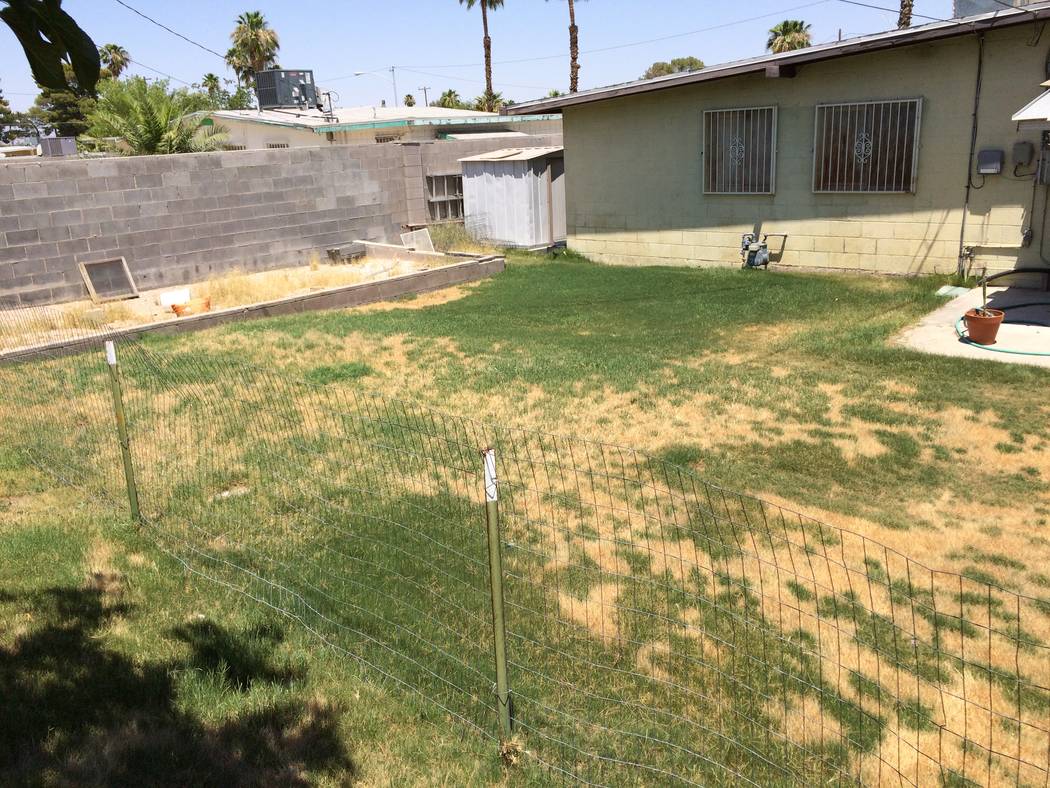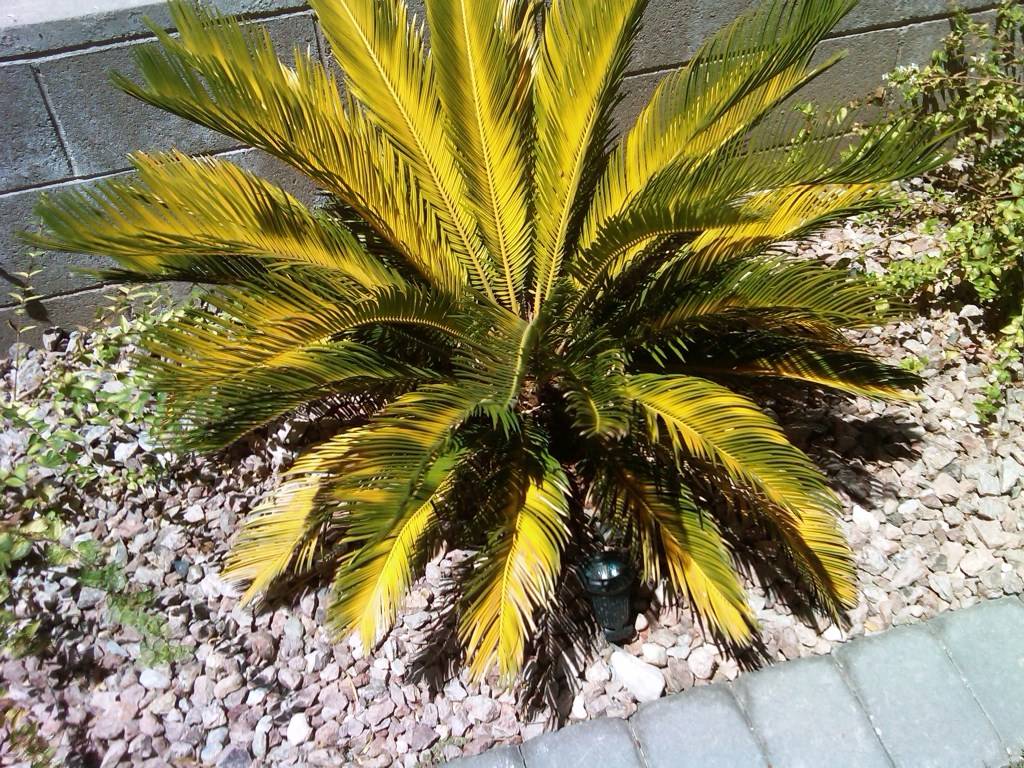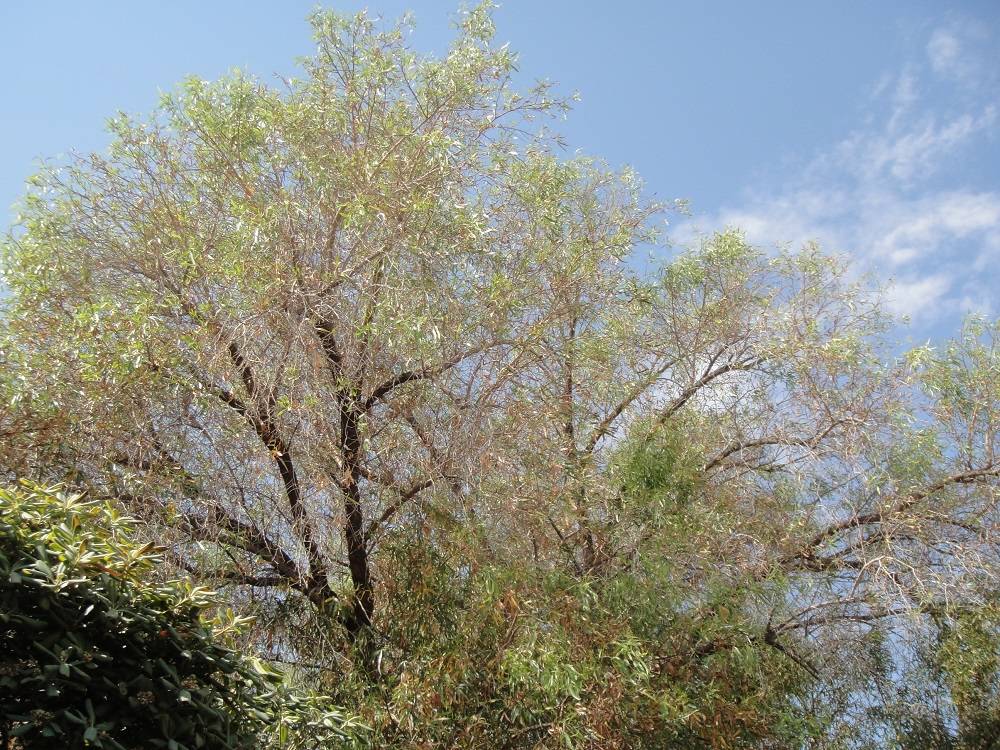Humidity of monsoon season can cause plant disease problems
This is the time of year we see a rise in humidity along with a threat from afternoon rains. This rise in humidity and high nighttime temperatures can also bring plant disease problems. You can do something now to prevent diseases before they occur.
The potential for disease on plants is always present. But when the environment favors disease development, the potential becomes a reality. Things prone to summer diseases include lawns and tomatoes.
Three methods used to combat summer diseases are to strengthen the plants’ natural defenses, improve the environment where they are growing, so disease is less likely, and use chemicals when “all else fails.”
n Lawns: Tall fescue is prone to summer diseases if it is not healthy or if it is watered between 6 p.m. and 2 a.m. Summer diseases favor warm temperatures and humid conditions. If your lawn is watered and still wet when night approaches, disease is more likely. Water your lawn between the hours of 2 a.m. and 5 a.m.
If your lawn has not been fertilized for two or three months, apply a half rate of fertilizer early in the morning when temperatures are cooler and make sure it is immediately followed by an irrigation.
n Tomatoes: It may feel dry to you, but inside that tangle of tomato leaves is a hot, humid jungle. Growing tomatoes upright, rather than letting them sprawl on the ground, reduces disease problems. Also, thinning the foliage improves air movement, reduces humidity inside that tangled mess and reduces disease potential.
Lightly fertilize tomato plants once a month. If you plant them in the ground and never fertilize them, chances of disease problems increase because of poor health.
Never overdo it. A light application is all they need. Applying too much nitrogen can be just as bad as not having enough.
Some people like to hand water their vegetables by spraying with a hose. Some people apply liquid fertilizer to the leaves. Do this early in the morning so that “tangled mess” has plenty of time to dry before nightfall.
When all else fails, then turn to chemical protection. Fungicides for lawns and vegetables can be found at the nurseries and box stores. Make sure to read and follow the directions on the label. Applying more than recommended on the label is not better.
Q: Please tell me how to prevent leaves on my sago palms from yellowing.
A: Sago palms in our climate and soils yellow as a result of poor soils, hot exposures, irrigating inappropriately and using rock as a surface mulch.
Do not grow sago palms in hot southern or western exposures unless placed in filtered shade from large trees. They grow best in eastern and northern exposures.
In southern and western exposures, intense sunlight will scorch fronds along the edges, turning them yellow, and they won’t be as lush. If this is their exposure, carefully move them to a new location in mid- to late October.
Sago palms grow poorly and the fronds yellow when grown in soils with little organic matter. One-half bag of compost spread around the base of the plant each year improves the soil. It is best if the compost is incorporated into the soil 12 to 18 inches from the trunk.
Sago palms like water but they also like good drainage. If soils are slow to drain, sago palm roots will rot. Fronds then begin to yellow and scorch. Adding compost to the soil usually takes care of the problem.
Sometimes, sago palms are planted in a desert landscape and surrounded by rock. Not a good idea. Plant them in high-water-use parts of the landscape with plenty of organics added to the soil. Apply a 4-inch layer of wood chip mulch, instead of rock, to the soil surface.
Q: Our African sumac trees have yellow leaves and lots of leaf drop. What’s causing this?
A: The usual problem with African sumac yellowing and leaf drop this time of year is a lack of water. During hot weather, the amount of water requires for larger trees is considerably more than when growing during 90 F weather. Particularly if it has been windy.
Another possibility could be watering too often. If tree roots are in soil that is watered daily and the soil is not draining, roots will suffocate. If they suffocate and die, they will develop yellow leaves and leaf drop.
There is a third possibility. It is possible to water these trees daily and still not give them enough water. If the total amount of water applied is not enough, even though it is applied daily, they can be underwatered.
There is one way to find out. See if the soil around the tree is wet or dry. Use a steel probe at least 18 inches long. This can be a very long but skinny screwdriver or a piece of 3/8-inch steel rebar.
Push it into the soil in several locations under the canopy of the tree. If it pushes into the soil with a great deal of difficulty, then the soil is too dry. If this is the case, flood the soil under the tree so water penetrates at least 18 inches deep.
Measure how deep water penetrates by pushing the probe in the soil. If water is running everywhere, turn the sprinkler or hose on multiple times during the day. You should see a response in seven to 14 days.
If the soil is too wet under the tree, then wait longer between waterings. But I tend to think it’s probably not getting enough water. Cover the soil under the canopy of the tree with wood chip mulch 4 inches deep. It helps keep the soil moist.
Q: I have two multitrunk palm trees in my backyard that are the same size. One has had brown fronds ever since it was planted five years ago. The other always had green fronds. I fertilize in June, July and August, and each gets the same amount of water.
A: This is a combination of water, soil nutrient and management issues. The brown palm is either not getting enough water or water is not draining. Palms do not like to get watered every day.
If you are watering a few days apart or longer, then increase the number and/or the size of the drip emitters irrigating the palms. This is a better solution than bumping up the minutes, since everything else on this valve will get an increase in water.
When you increase the amount of water, if water is running out of the area under the palm tree, then split irrigations into two or three separate waterings with an hour separation between.
Either these palm trees are not getting the fertilizer they need or they have been fertilized but not responding to it. Put 1 cubic foot of compost under the tree and water it in with a hose. Do this once a year replacing a fertilizer application.
If you want a faster response from the compost, dig four to six vertical holes in the soil with a posthole digger about 18 inches deep. Backfill these holes with compost and water it in thoroughly.
Pruning will help. Notice how the fronds are green at the top but brown and ugly closer to the ground. Remove palm fronds that are ugly and brown. Remove any fronds growing lower than horizontal. Remove these fronds as close to the trunk as possible.
Consider skinning the palm with a linoleum knife or box cutter. This removes all the base of the fronds, exposes the trunk and makes them look very sophisticated.
Bob Morris is a horticulture expert and professor emeritus at the University of Nevada, Las Vegas. Visit his blog at xtremehorticulture.blogspot.com. Send questions to Extremehort@aol.com.




















